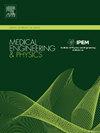恒q变换、伽玛图和梅尔谱图技术在人工智能辅助心脏诊断中的比较分析
IF 1.7
4区 医学
Q3 ENGINEERING, BIOMEDICAL
引用次数: 0
摘要
心血管疾病(cvd)是全球主要的死亡原因,因此需要及早准确地发现心脏异常。异常的心音,预示着潜在的心脏问题,由于其低频的性质,构成了挑战。利用数字信号处理和心音图(PCG)分析,本研究采用先进的深度学习技术进行心音自动分类。时频表示捕获多种心音特征,包括伽玛图、梅尔谱图和常q变换(CQT)。设计并严格评估了具有有向无环图(DAG-CNN)架构的卷积神经网络,对伽玛图、梅尔谱图和CQT的分类准确率分别达到100%、99.7%和99.5%。通过与预训练CNN模型的对比分析,证明了所提模型的优越性能。自动心音分类的这一进步为早期诊断提供了一种有前途且具有成本效益的工具,特别是在资源有限的情况下,有助于解决诊断差距并提高心脏护理的可及性。本文章由计算机程序翻译,如有差异,请以英文原文为准。

A comparative analysis of Constant-Q Transform, gammatonegram, and Mel-spectrogram techniques for AI-aided cardiac diagnostics
Cardiovascular diseases (CVDs) are the leading global cause of death, which requires the early and accurate detection of cardiac abnormalities. Abnormal heart sounds, indicative of potential cardiac problems, pose a challenge due to their low-frequency nature. Utilizing digital signal processing and Phonocardiogram (PCG) analysis, this study employs advanced deep learning techniques for automated heart sound classification. Time-frequency representations capture multiple heart sound features, including gammatonegram, Mel-spectrogram, and Constant-Q Transform (CQT). A Convolutional Neural Network with Directed Acyclic Graph (DAG-CNN) architecture is designed and rigorously evaluated, achieving high classification accuracies of 100%, 99.7%, and 99.5% for gammatonegram, Mel-spectrogram, and CQT, respectively. Comparative analysis with pre-trained CNN models demonstrates the superior performance of the proposed model. This advancement in automated heart sound classification offers a promising and cost-effective tool for early diagnosis, particularly in resource-limited settings, helping to address the diagnostic gap and enhance cardiac care accessibility.
求助全文
通过发布文献求助,成功后即可免费获取论文全文。
去求助
来源期刊

Medical Engineering & Physics
工程技术-工程:生物医学
CiteScore
4.30
自引率
4.50%
发文量
172
审稿时长
3.0 months
期刊介绍:
Medical Engineering & Physics provides a forum for the publication of the latest developments in biomedical engineering, and reflects the essential multidisciplinary nature of the subject. The journal publishes in-depth critical reviews, scientific papers and technical notes. Our focus encompasses the application of the basic principles of physics and engineering to the development of medical devices and technology, with the ultimate aim of producing improvements in the quality of health care.Topics covered include biomechanics, biomaterials, mechanobiology, rehabilitation engineering, biomedical signal processing and medical device development. Medical Engineering & Physics aims to keep both engineers and clinicians abreast of the latest applications of technology to health care.
 求助内容:
求助内容: 应助结果提醒方式:
应助结果提醒方式:


